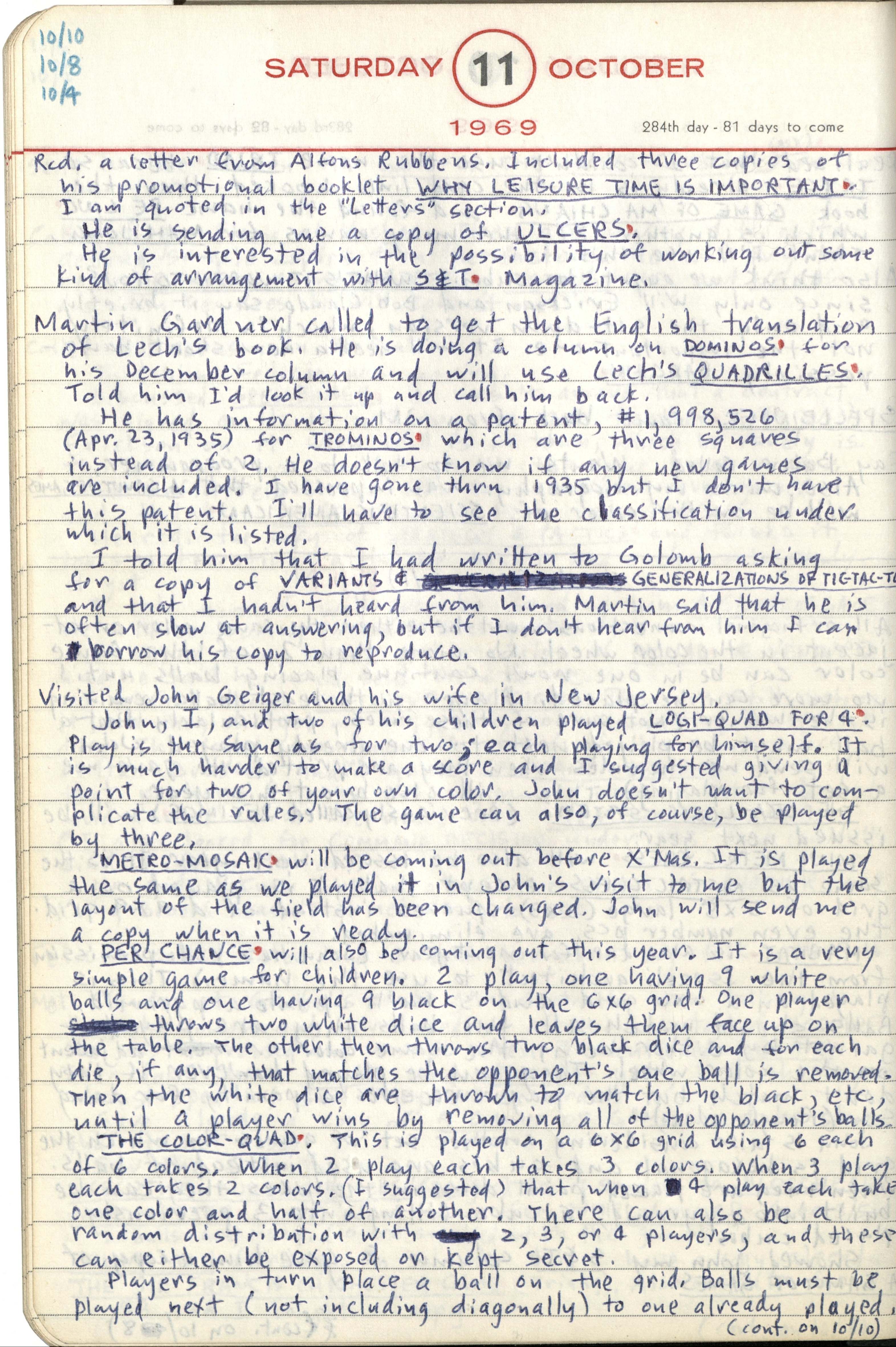1969_Sackson_304_October 11.jpg: Page #1
Original title: 1969_Sackson_304_October 11.jpg

Transcription
10/10 10/8 10/4 SATURDAY 11 OCTOBER 1969 284th day - 81 days to come
Rcd. a letter from Alfons Rubbens. Included three copies of his promotional booklet WHY LEISURE TIME IS IMPORTANT. I am quoted in the "Letters" section. He is sending me a copy of ULCERS. He is interested in the possibility of working out some kind of arrangement with S & T Magazine.
Martin Gardner called to get the English translation of Lech's book. He is doing a column on DOMINOS for his December column and will use Lech's QUADRILLES. Told him I'd look it up and call him back. He has information on a patent, #1,998,526 (Apr. 23, 1935) for TROMINOS which are three squares instead of 2. He doesn't know if any new games are included. I have gone thru 1935 but I don't have this patent. I'll have to see the classification under which it is listed. I told him that I had written to Golomb asking for a copy of VARIANTS & [crossed out] GENERALIZATIONS OF TIC-TAC-TOE and that I hadn't heard from him. Martin said that he is often slow at answering, but if I don't hear from him I can borrow his copy to reproduce.
Visited John Geiger and his wife in New Jersey. John, I, and two of his children played LOGI-QUAD FOR 4. Play is the same as for two; each playing for himself. It is much harder to make a score and I suggested giving a point for two of your own color. John doesn't want to com- plicate the rules. The game can also, of course, be played by three. METRO-MOSAIC will be coming out before X'Mas. It is played the same as we played it in John's visit to me but the layout of the field has been changed. John will send me a copy when it is ready. PER CHANCE will also be coming out this year. It is a very simple game for children. 2 play, one having 9 white balls and one having 9 black on the 6 x 6 grid. One player [crossed out] throws two white dice and leaves them face up on the table. The other then throws two black dice and for each die, if any, that matches the opponent's one ball is removed. Then the white dice are thrown to match the black, etc. until a player wins by removing all of the opponent's balls. THE COLOR-QUAD. This is played on a 6 x 6 grid using 6 each of 6 colors. When 2 play each takes 3 colors. When 3 play each takes 2 colors. (I suggested) that when 4 play each take one color and half of another. There can also be a random distribution with 2, 3, or 4 players, and these can either be exposed or kept secret. Players in turn place a ball on the grid. Balls must be played next (not including diagonally) to one already played. (cont. on 10/10)